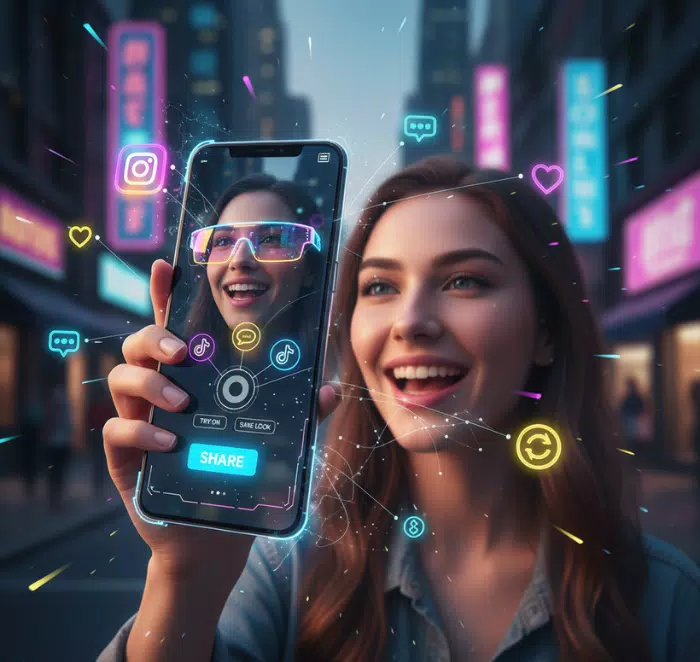Augmented reality apps for convenient shopping experiences


Improved customer experience
.gif)

Enhanced brand loyalty
Social media engagement

자주 묻는 질문
AR apps overlay computer-generated digital content, such as images, 3D models, or animations, onto your customer's view of the real world. Consumers can have AR experiences through their devices, like a smartphone or tablet. Unlike virtual reality, AR apps can enhance and interact with your physical surroundings in real time.
First, you need to choose how you want to build your app. You can make it natively (using Swift for iOS or Kotlin for Android) or use a game engine like Unity or Unreal. Next, you should install the tools and software you need. It includes AR SDKs, such as ARKit for iOS or ARCore for Android. Then, you will create or add 3D models and design your AR experience. Now, you should think about how consumers will see and interact with virtual objects in the real world. After that, you will add features, like object placement, motion tracking, and touch controls. Lastly, you need to test your app's performance on real devices and fix any evolving issues. It will help the apps run smoothly. Finally, you can publish it on your favorite app stores. Otherwise, you can launch it directly to your customers for interactive experiences.
AR apps use your customer's phone or tablet’s camera to look at and understand the real world around them. The apps can recognize flat surfaces, shapes, and objects to figure out what’s in front of them. AR apps also use their device’s sensors, like GPS, accelerometers, and gyroscopes, to know the device's location, how it’s moving, and which direction it’s facing. Once the app understands their surroundings, it adds digital objects, such as 3D models, animations, or extra information, on top of what they see through the camera. Thus, the apps can make it look like those digital objects are part of the real world. It will create a fun and interactive mix of reality and computer-generated content.
You can use AR apps in a variety of industries. In the gaming industry, AR apps can create interactive experiences. It will blend digital elements with the player’s real-world surroundings. Also, students can use AR apps to understand difficult topics through 3D models and simulations. Healthcare professionals may use augmented reality apps for surgical planning, medical training, and patient education. In retail and e-commerce, AR apps allow customers to try on products in real-time. Thus, you can improve your customers' purchasing confidence. Real estate agents use AR apps to offer virtual property tours. On the other hand, marketers use it to create interactive brand experiences. Overall, AR apps transform how consumers interact with digital content in real-world environments.
Smartphones, tablets, and AR glasses can all support AR apps. The devices have built-in cameras, motion sensors, and powerful processors. They use technologies: GPS, accelerometers, and gyroscopes to track movement and direction. They can detect surfaces and display 3D objects, with the help of AR platforms such as ARKit for iOS and ARCore for Android. It allows digital content to appear naturally within real-world environments. Thus, you can create an interactive AR experience.
AR and VR apps are different in how they interact with the real world. AR adds digital content: pictures, animations, or 3D objects to the real world around you. VR takes you into a completely digital world. In some cases, you use AR on smartphones or AR glasses. On the other hand, VR needs special headsets that cover your eyes and block the real world. Both give immersive experiences, but AR mixes real and virtual things, while VR replaces reality completely.
















